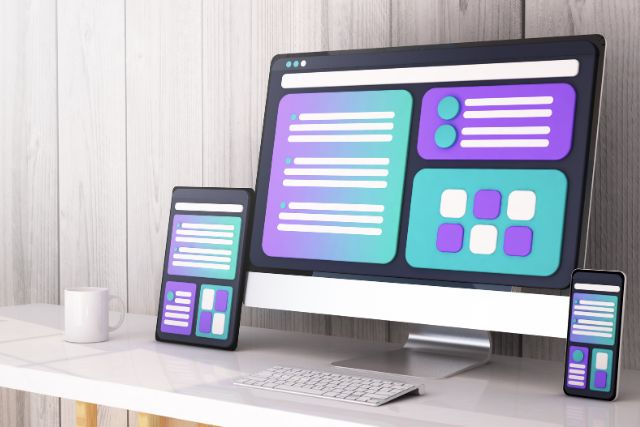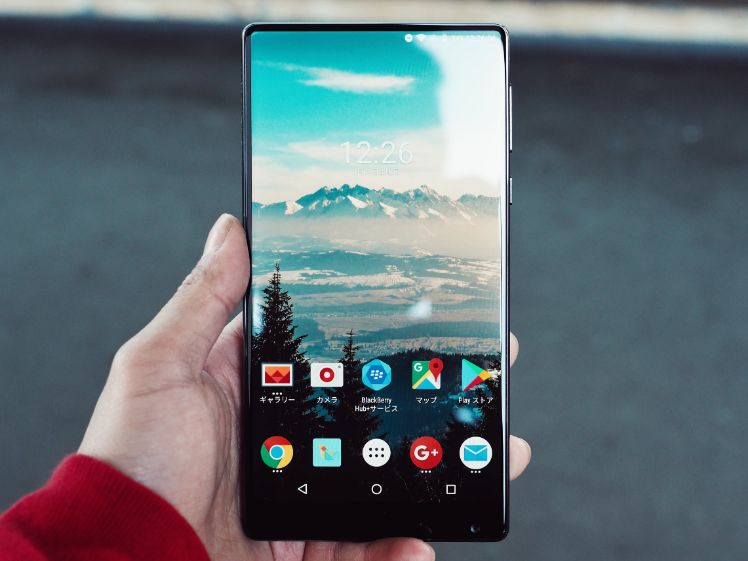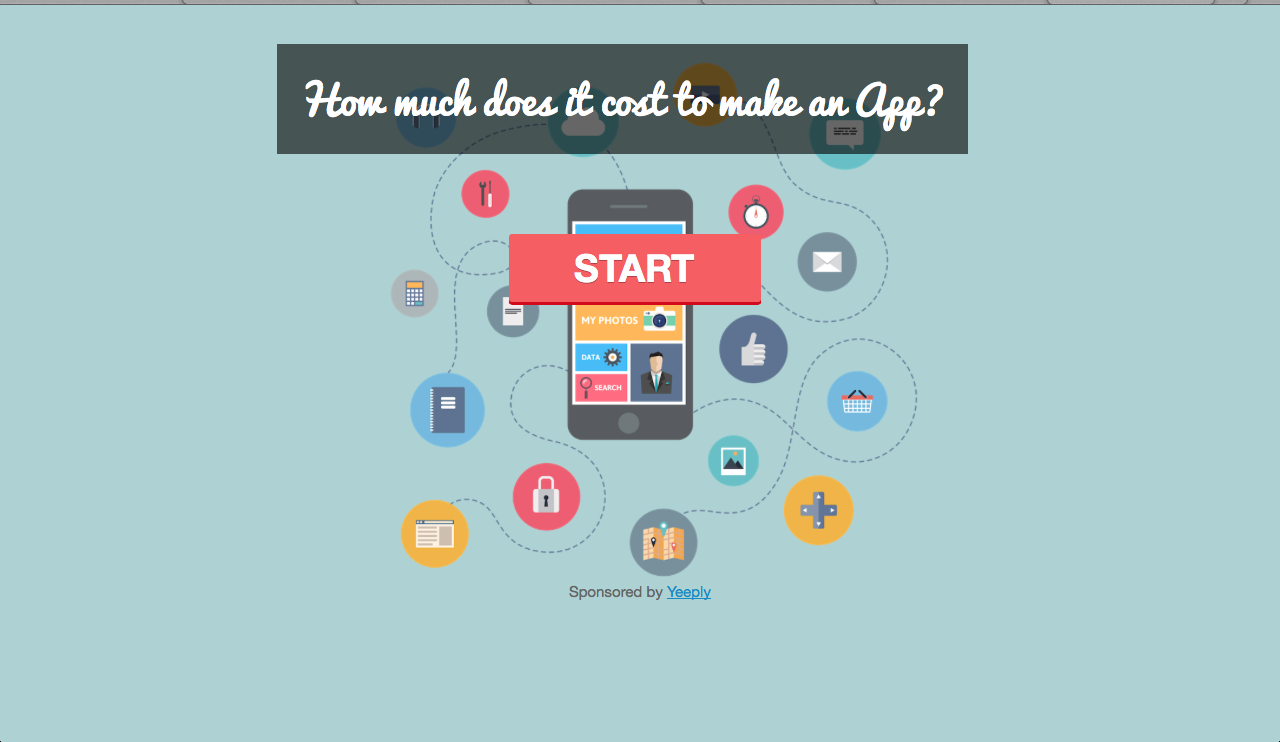The implementation of techniques of responsive design (or responsive web design) is located in the center of companies’ digital strategy and applies to all types of products, services and processes.
In the case of applications development, to know the technical and functional differences between Responsive Web Apps and Native Mobile Apps is key.
Index
- Responsive Web App: Definition and Benefits
- Native Mobile Applications: Features and Advantages
- Comparison between Responsive Web Apps and Native Mobile Apps
- Yeeply helps you choose the best technology and app solutions for your business
App Web Responsive: Definition and Benefits
Is it correct to talk about “Responsive Web App”?
A web application is a version of an optimized web page to be viewed on mobile devices.
The so-called Responsive Web Apps are based on the Responsive Web design or Adaptive Web design, which allows its visualization and adaptation to all devices.
This adaptation is produced by the use of Cascading Style Sheets (CSS) that guarantee different configurations and modify the style properties according to the size, orientation, resolution, color capacity and other characteristics of each screen.
? Keep reading | What is a web app, its advantages and disadvantages
The advantages of the applications with responsive web design are:
- You will increase your reach among tablet and smartphone users.
- You will have a potential increase in your sales and your conversion rate.
- You will get detailed analysis and reports.
- You will increase your visibility in search engines.
- You will save time and money in its development and maintenance.
- You will be able to anticipate market trends.
- You will guarantee the adaptability of your websites.

Mmost used programming languages in responsive web development
In adaptive development standard programming languages (HTML5 and CSS3) and frameworks for a responsive web design such as Bootstrap are used.
The combination of CSS3 and HTML5 controls the content and layout of the page in a browser.
CSS3 creates a responsive design when combined with a technique called “Media Query”.
The “Media Query” details the view of a document on different output media and screen sizes, and allows you to check layout alterations.
With respect to HTML5, it is not a programming language as such, but a standard for structuring, interpreting, and deploying the content of the website.
HTML5 makes it easy to create sites and applications adapted to current digital technologies. It guarantees the compatibility between browsers and devices (it works correctly with smartphones and tablets that browse with Internet Explorer, Mozilla Firefox, Safari or Google Chrome) and improves both its speed and its display on mobile devices.
With HTML 5 you can get better search engine positioning, implement multimedia and interactive features, use Javascript APIs to include complex elements (such as 3D drawings) or perform SQL queries.
For its part, Bootstrap is the most used HTML-CSS framework.
From a functional point of view, it has pre-built responsive web templates for creating common elements such as menus and buttons.
It also has icons to easily add pages.
However, the greatest potential of this web design tool is the logic grid on which it is based to establish the structure of the pages.
Native Mobile Applications: Features and Advantages
Native Mobile Apps are used directly on an operating system (Android, iOS or Windows).
Most are designed for smartphones and tablets, although they only run on devices with the operating system for which they were created.
Native Apps are very efficient because they have unique features for each hardware.
In fact, they are more stable than the Apps generated with standard programming languages, and are considered more accessible for users and more scalable for developers.
Between their advantages, we highlight:
- You will be able to prioritize the needs of your target audience.
- You will define and solve problems in a concrete and effective way.
- You can expand them for future use.
- You will have an App with optimum performance.
- You will guarantee your users a complete, intuitive and interactive experience, by implementing a UX / UI approach in their development.
- You will have less dependence on browsers and less chance of “bugs”.
Programming languages used in the development of native apps
Choosing the programming language is key in the development of Native Apps, since each operating system requires some features and functions.
These are the more important:
- Swift. It is the programming language of Open Source for the Apple ecosystem, and is among the most widely used in the world.
- Java. One of the most popular programming languages, due to its high safety and efficient performance. It is the language par excellence of the Android operating system.
- Kotlin. Language derived from Java that improves on its predecessor in many aspects, being faster and with a lot of more concise and compact code.
- C/C++. Despite being the oldest programming language for Apps, it is still used for its high performance and speed. It is common in advanced 3D games and scientific applications.
? To know more | Create mobile apps: Differences between Android and iOS
Comparison between Responsive Web Apps and Native Mobile Apps
The mobile app market is in constant expansion and for a business it is increasingly important to count on an app. In this way, companies do not want to lose the opportunity to connect with its users and clients in a transversal way and from different devices.
But what type of application is more interesting in each case?
Design and development
Responsive Web Apps are based on standard programming languages and in flexible CSS style sheets.
Native Mobile Applications, on the other hand, are developed by implementing unique features and functionality for each platform.
Web Applications require an easier development effort and allow a faster commercialization, being a good alternative for companies taking their first steps in this segment.
In addition, they do not need updates and their maintenance cost is minimal.
The native apps require a larger investment, higher need of experienced professionals that develop the different versions for the different platforms.
Accessibility and compatibility
One of the main characteristics of responsive design is its compatibility with different devices and screen sizes: Using standard languages makes it possible for the same code to be reusable across different operating systems, regardless of the computer being used.
In addition, since the Web Apps are not downloaded, they use fewer device resources and they are accessible from any terminal.
According to the user experience of Responsive Web Apps, it is “inconsistent” because it depends on browsers, which can lead to crashes or slow usage.
Users often have a better experience with Native Mobile Apps: by using the terminal hardware, they have full access to the device’s resources, guaranteeing more comfortable interactions, sending push notifications or access to updates.
Features and performance
Web apps are always connected and their speed is subject to the browser and the quality of the Internet connection.
Besides, the access to hardware is limited and they are less responsive.
Generally, the performance of the Responsive Web Apps is lower, offering a worse browsing experience.
Also, the customer reach of the Web Apps is limited, while Native Mobile Apps have more visibility because you can find them in the app stores and it is possible to do marketing campaigns for their commercialization.
Finally, many products and services have large customer segments who use mobile applications.
If, in addition, the functionalities and requirements of the mobile application are complex or specific, there will be no choice but to develop a native application.
✅ You may be interested | Create a successful mobile app
Yeeply helps you choose the best technology and app solutions for your business
Web Apps with responsive design have significant advantages, including their price and high compatibility, although Native Mobile Apps offer better performance and a better user experience.
Thanks to the support of our expert professionals, at Yeeply we analyze each project to understand the client’s needs and recommend the best solution for your business, assessing its pros and cons and comparing the costs of the market.
Our IT equipment is dedicated to applying all types of software tests, including unit tests, integration tests, and end-to-end tests. Click here to hire freelance programmers for complete and effective testing.
If you need more information, contact us.












